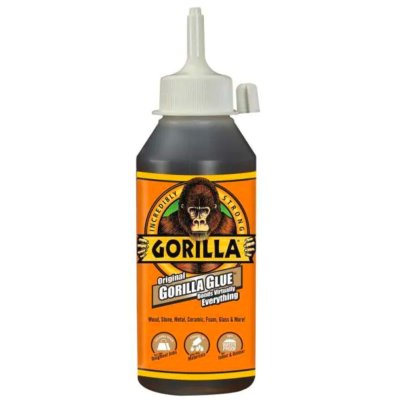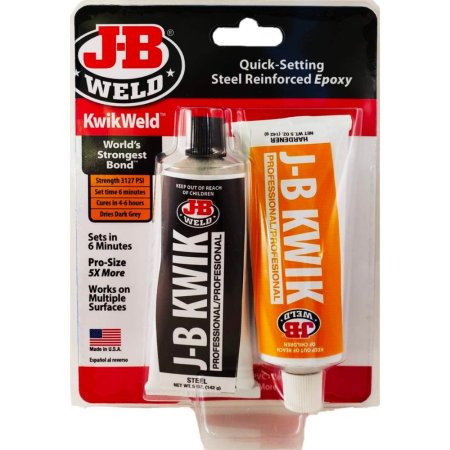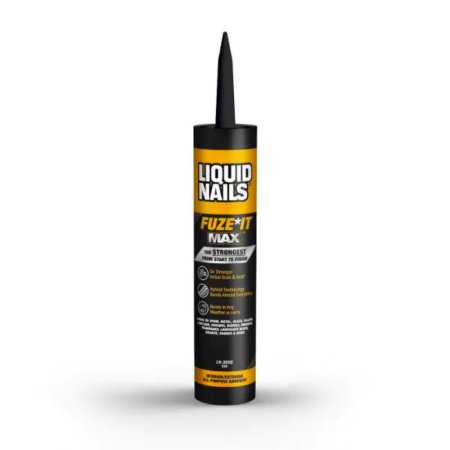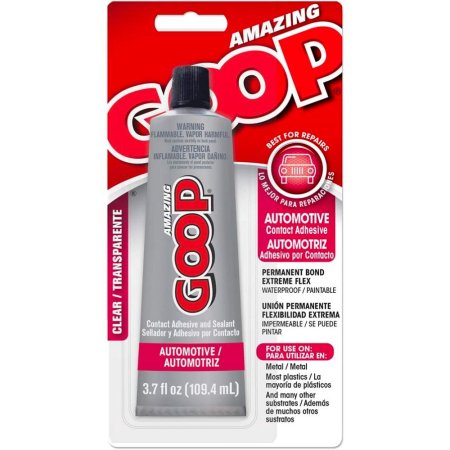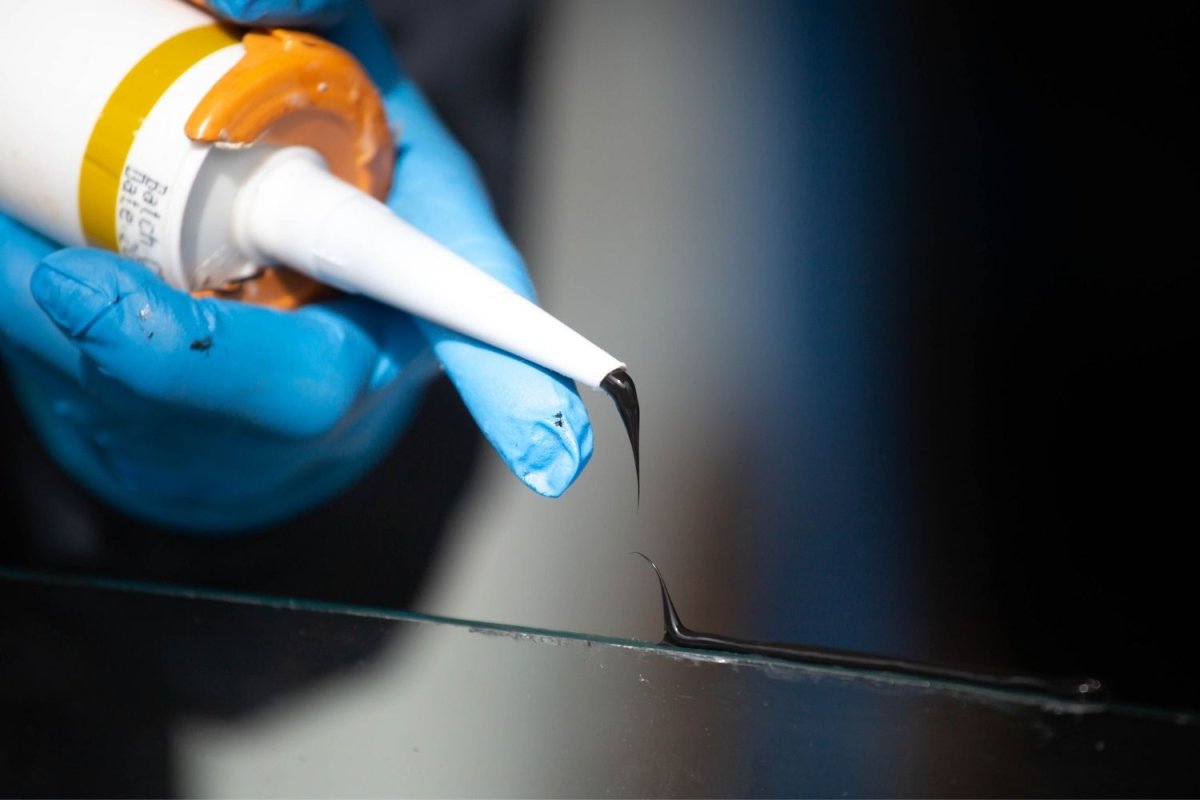
We may earn revenue from the products available on this page and participate in affiliate programs. Learn More ›
Gluing metals can be challenging for a number of reasons. Metals are not porous, so glues can’t penetrate the surface. Metals are usually very smooth, offering little or no grab. Metal objects are often used outdoors, so metal glues have to withstand extremes of heat and cold, water, and perhaps salt or chemicals.
Modern metal adhesives have overcome these challenges, and it’s now possible to join metal to metal, fabric, wood, and glass. However, there is no universal solution for every situation and type of bond, so choosing the right product is dependent on knowing what features are needed from the adhesive. Keep reading to find out how to identify the best glue for metal for a wide variety of scenarios, and check out some of the best options for several typical situations.
- BEST OVERALL: J-B Weld KwikWeld 10-Ounce Professional Epoxy Glue
- BEST BANG FOR THE BUCK: Loctite Super Glue Ultra Gel Control
- BEST POLYURETHANE: Gorilla Original Glue
- BEST FOR CONSTRUCTION: Liquid Nails Fuze*It Max All Surface Adhesive
- BEST FOR AUTOMOTIVE: Eclectic Products Amazing Goop Automotive Adhesive
- BEST FOR REPAIRS: Quiksteel Reinforced Epoxy Putty for Metal
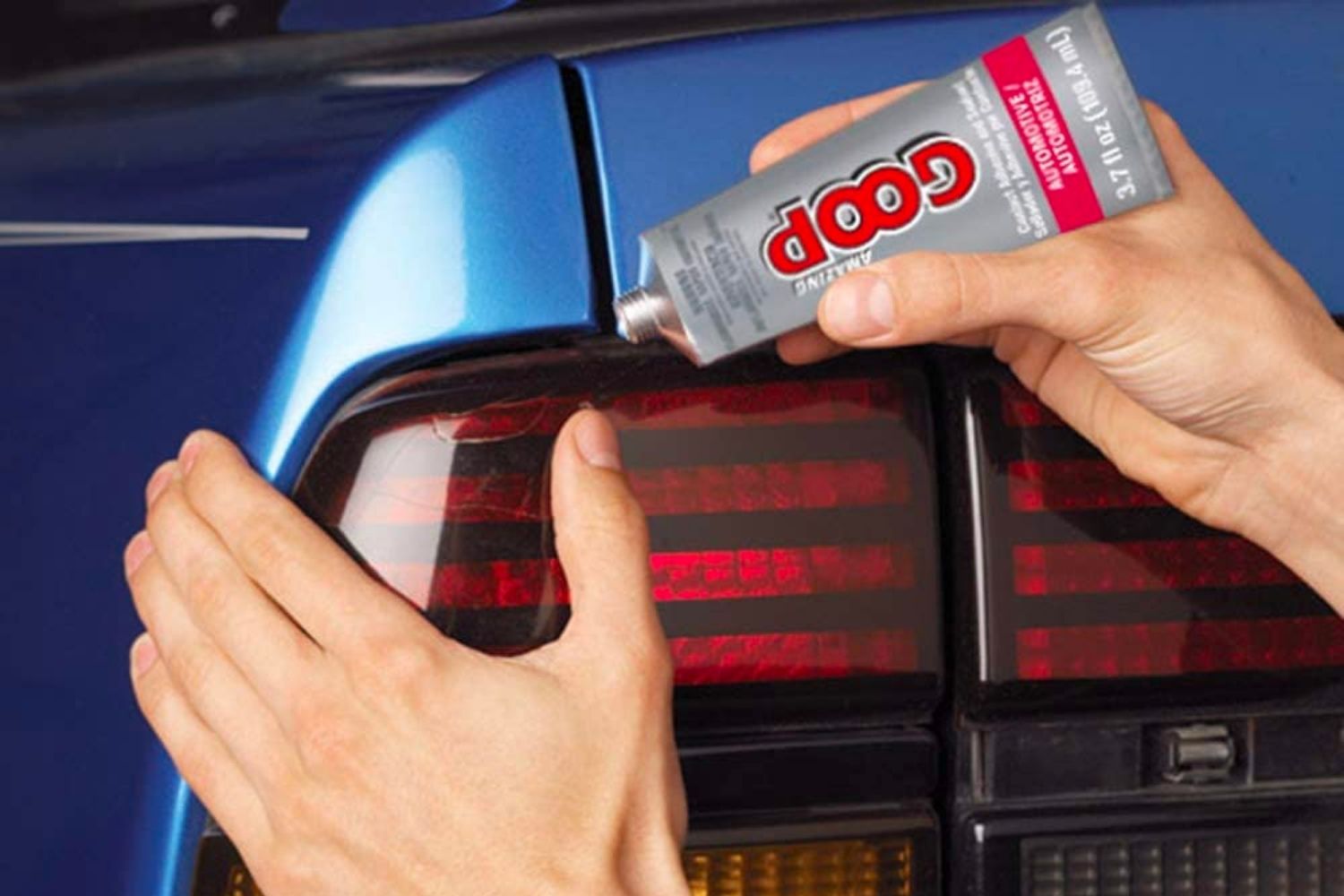
How We Chose the Best Glue for Metal
I am an engineer by profession so I have considerable experience with metals and a range of adhesives. I’m also a keen DIYer and have used several of these products at home. Added to first-hand knowledge is many hours of research into chemical composition and how that affects the way glues for bonding metal with other materials.
All of our top picks for bonding metal come from widely recognized brands. These are companies with vast experience that have invested heavily in their products. They also have technical know-how to back up their claims. We have also been careful to check prices in order to offer good value for money.
Our Top Picks
Our top picks for best metal gluesinclude a variety of brands across different categories. The following products should make it easier to find the right glue needed for a metal-related project.
Best Overall
J-B Weld KwikWeld 10-Ounce Professional Epoxy Glue
Pros
- Very high tensile strength; waterproof once fully hardened to a 3,127-psi strength
- Sets onmetal surfaces in 6 minutes, with a 4- to 6-hour cure time
- Good temperature tolerance; can handle temperatures up to 300 degrees Fahrenheit
- Can bond metal to wood, brick, masonry, ceramics, and fiberglass
Cons
- Unpleasant fumes may be smelled while using or applying; mask may be required
- This product is labeled as a skin irritant; gloves recommended
Product Specs
- Type: Epoxy
- Setting and curing times: Sets in 6 minutes; cures in 4 to 6 hours
- Color when dry: Dark gray, but can be primed and painted
J-B Weld products are widely recognized as among the best glues for metal-to-metal bonding. Its KwikWeld epoxy glue is also effective at sticking metal to wood, brick, masonry, ceramics, and fiberglass, though an alternative is recommended for glass.
The setting time for this epoxy glue is 6 minutes faster than most epoxies, as is a cure time of 4 to 6 hours. It’s waterproof once fully hardened, and it can be sanded, primed, and painted. Tensile strength is a class-leading 3,127 pounds per square inch (psi), and it can withstand temperatures up to 300 degrees Fahrenheit.
As with all epoxies, correct surface preparation is very important for a successful bond. The manufacturer warns that it should be used in a well ventilated area and that eye protection and gloves should be worn.
Get the J-B Weld glue for metal at Amazon, The Home Depot, Grainger, or J-B Weld.
Best Bang for the Buck
Loctite Super Glue Ultra Gel Control
Pros
- This glue sets quickly and takes 12 to 24 hours to fully cure and harden
- Easy to use; dual push applicators and tip opening allow for precise application
- Low cost compared to similar options; suitable for everyday fixes
Cons
- Not for large projects; small quantity cannot fix large cracks or breaks
- Can cause allergic reaction in some users; caution advised while using
Product Specs
- Type: Cyanoacrylate
- Setting and curing times: Sets quickly, though time unspecified by manufacturer; cures in 12 to 24 hours
- Color when dry: Clear
Loctite is one of the most recognizable brands of cyanoacrylate (superglue). The brand’s Super Glue Ultra Gel is considerably thicker than its liquids, making it easier to apply and therefore less wasteful. As with all cyanoacrylates, metal bonding is very rapid, and finger pressure is all that’s required.
Loctite Super Glue Ultra Gel will bond metal to paper, plastic, wood, fabrics, ceramics, and rubber. It retains a small amount of flex, so it is impact and vibration resistant. Loctite says it will withstand temperature extremes, but it doesn’t provide details.
While the patented container does allow for good flow control, it does give the impression there is more glue than is actually the case. It is very important to close the tube immediately after use or it can quickly dry out. One important note: This glue is very difficult to remove once applied.
Get the Loctite glue for metal at Lowe’sor The Home Depot.
Best Polyurethane
Gorilla Original Glue
Pros
- Tremendous versatility; can be used on metal, wood, most plastics, concrete, and more
- Completely waterproof after fully cured; suitable for use in kitchens, laundry rooms, or on boats
- Can be used indoors and outdoors; suitable for most applications
Cons
- Slightly fussy preparation; may be difficult for first-time users
- Will harden in bottle if not closed carefully; caution recommended
Product Specs
- Type: Polyurethane
- Setting and curing times: Setting time unspecified; cures in 24 hours
- Color when dry: Brown, but can be stained or painted
The Gorilla brand has been around since 1994, and its polyurethane glue is a highly versatile product, providing high-strength bonding of metal, wood, most plastics, concrete, masonry, ceramics, stone, glass, and foam. It is particularly good when different materials need to be glued together.
The company states this glue can withstand temperatures between -40 and 200 degrees Fahrenheit. It’s 100 percent waterproof and is unaffected by the sun’s harmful UV rays, so it is equally good for use indoors or out.
The foaming action is excellent as a gap filler. However, the expansion can push items apart, so clamping is strongly recommended. On small items this can be tricky, but paper tape or packing tape is usually sufficient.
Get the Gorilla glue for metal at The Home Depot, Ace Hardware, or Target (2 ounces).
Best for Construction
Liquid Nails Fuze*It Max All Surface Adhesive
Pros
- Very strong initial grab; takes 10 minutes to fully set
- Can be used in all weather; withstands temperatures of -40 to 300 degrees Fahrenheit
- Environmentally friendly formula; contains low odors and VOCs for eco-conscious consumers
Cons
- Relatively slow cure compared to other glues for metal; up to 24 hours to cure
- Not for application on any polyethylene or polypropylene products or surfaces
Product Specs
- Type: Polyurethane
- Setting and curing times: Sets in 10 minutes; cures in 12 to 24 hours
- Color when dry: Tan, but can be painted
Liquid Nails Fuze*It Max is an exceptionally versatile adhesive that will glue metal to very nearly anything, including unusual materials like marble, bathroom ceramics, concrete, PVC, and drywall. It can be applied at temperatures between 0 and 140 degrees Fahrenheit and even while it’s raining.
It has a strong grab, so it is worth doing a test assembly—when practical—before application. Mistakes can be difficult to pull apart. Initial setting takes only 10 minutes. Once fully cured, it can withstand temperatures from -40 to 300 degrees Fahrenheit. The formula has low odor and low VOCs (volatile organic compounds), and it has been awarded the independent Greenguard Gold certificate for low emissions.
Get the Liquid Nails glue for metal at The Home Depot or Menards.
Best for Automotive
Eclectic Products Amazing Goop Automotive Adhesive
Pros
- Unaffected by weather; heatproof to 180 degrees Fahrenheit, water- and sunlight-resistant
- Flexible and impact-resistant; suitable for applications on many outdoor materials, plumbing, and vehicles
- Can be used for insulating electrical wiring and protecting battery terminals
Cons
- Slow curing time; may not be suitable for quick and easy applications
- Vapor is flammable and can be harmful; protective gear recommended during application
Product Specs
- Type: Silicon copolymer (similar to polyurethane)
- Setting and curing times: Sets in 45 minutes; cures in 48 to 72 hours
- Color when dry: Clear
Eclectic Products’ Amazing Goop adhesive is aimed at automotive repair and restoration because it provides an excellent bond between metal, vinyl, rubber, plastic, and glass. It remains flexible once cured, so it can be used for things like convertible roof repairs and hoses. It can also insulate electrical wiring and protect battery terminals. It is completely waterproof, unaffected by rain or UV from sunlight, and heat-proof to 180 degrees Fahrenheit.
It is also useful as a glue for general DIY and plumbing use. It will bond ceramics, stone, PVC, brick, and leather. However, it will not work on polyethylene or polypropylene, and it actually melts Styrofoam.
It does produce an unpleasant vapor, which can irritate eyes and respiratory systems. It is also flammable, so it should never be used near a naked flame.
Get the Eclectic Products glue for metal at Amazon, Ace Hardware, Lowe’s, or The Home Depot.
Best for Repairs
Quiksteel Reinforced Epoxy Putty for Metal
Pros
- Extremely strong hold; becomes steel hard 15 minutes after initial application
- Easy to mold to shape before fully cured; suitable for wood, ceramic, glass, and more
- Fully cures in 1 hour; much faster than other metal glues on the market
Cons
- Heavy impacts or abrasions can crack this glue for metal
Product Specs
- Type: Epoxy putty
- Setting and curing times: Sets in 5 minutes and is steel hard in 15 minutes; fully cures in 1 hour
- Color when dry: Gray, but can be painted
Quicksteel epoxy putty is a two-part product that is mixed together by hand, then molded onto or around metal components to bond them together. It is one of very few metal adhesives that will work on cast iron. Once hardened, it can withstand temperatures as hot as 500 degrees Fahrenheit. It can also be drilled, filed, sanded, machined, and painted.
While frequently used for repairing bicycles, metal furniture, appliances, and machinery, it can also be used for wood, ceramics, glass, fiberglass, PVC, and most plastics. It is rated as safe for drinking water by the independent NSF testing organization.
This metal adhesive works best on bare metal, and it can fail on painted or chrome-plated surfaces, so these need to be removed first. It doesn’t have any flex and can occasionally fracture under heavy or repeated impacts.
Get the Quiksteel glue for metal at Amazonor Grainger.
Jump to Our Top Picks
What to Consider When Choosing the Best Glue for Metal
A variety of products now make claims to be effective at metal bonding. While the claims may be largely true, there are important differences that will determine the best metal glue choice for a particular project. It is useful to understand a little about how each performs with different types of materials and their suitability for different environments.
Types of Glue for Metal
Few glues for metal are intended solely for that purpose. While metal-to-metal glues are available, soldering or welding is often a preferred method of joining metal. Most glues have a wider range of applications, in that they can be used to bond fabric, plastic, glass, stone, ceramics, or other materials to the metal. They can be divided into three main groups:
Epoxy Metal Glue
Epoxy is usually the best glue for metal-to-metal joints. Epoxy for metal, like other forms of the adhesive, comes in two parts: a resin and a hardener. They need to be mixed together in equal proportions. Sometimes they come in handy twin plungers that ensure equal measures, though individual tubes are more common.
Once fully cured (drying times are compared below) the bond is very hard, waterproof, and can be sanded or drilled. Most also withstand large variations in temperature. A useful feature of metal epoxy glue is that it doesn’t conduct electricity. It is the most versatile of glues for metal, capable of metal bonding or gluing virtually all materials.
Polyurethane Glue
Polyurethane glues have long been popular as woodworking adhesives and for construction use. While they do not form as strong a bond as epoxy, they can nevertheless be a good glue for metal, particularly when securing to other materials.
Polyurethane glue for metal needs either moisture or heat to cure properly, which sounds like a disadvantage, but room temperature and ordinary humidity are usually sufficient for activation. Still, it’s important to check the maker’s instructions to be sure an environment is suitable.
The advantages polyurethanes offer include good coverage and excellent gap-filling ability because they expand as they cure. Most polyurethane glues have good water and UV resistance, so they’re safe for use outdoors.
Superglue for Metal
Cyanoacrylates (better known as superglues) are rapid-setting polymers that form strong chemical chains when water is present. As with polyurethane glues, there is usually enough moisture in the atmosphere for activation. There is also sufficient moisture in the human body, which is why it glues skin so well.
While often seen as a general-purpose household adhesive, the formulation is usually adjusted to suit particular applications. If you are wondering, “Does super glue work on metal?” you’ll find that ordinary “superglue” will glue metal to metal and other materials. More success will normally be found with high-strength versions. While cyanoacrylates have some degree of water resistance, they are rarely recommended for outdoor use. Cyanoacrylates are best for small metal bonding tasks or minor repairs.
Bonding Process and Drying Time
Each type of metal glue has a different bonding process and drying time. While there are variations among products, most have similar characteristics that fall into the following categories. It’s important to double-check the manufacturer’s instructions on the label for variations in method or drying and curing times. Wearing gloves or other protective gear may also be recommended from the maker.
- Epoxy: While these adhesives are versatile, epoxy can be quite fussy in terms of surface preparation. Any contamination will weaken the bond. It’s usually recommended that metal surfaces are roughened with coarse abrasive where possible. Epoxies should be applied to both surfaces to be joined. Initial drying takes anywhere from 5 to 30 minutes, and full cure anywhere from 4 to 24 hours.
- Polyurethane: These are single-part adhesives, and polyurethanes tend to be more forgiving than epoxy. However, care with preparation is always recommended and application varies. Some are applied to one surface, and others to both. Initial drying usually takes a couple of hours, but while some cure fully in 24 hours, some construction adhesives require up to 2 weeks for a fully secure bond.
- Cyanoacrylate: It is often assumed that with superglues it is simply a question of dabbing a spot of adhesive on an item and holding it together for a few seconds, but it needs a clean and dry surface in order to work. It is only applied to one surface, and while all work quite rapidly, drying time varies considerably. Depending on the product, drying can take anywhere from 2 or 3 seconds to 5 minutes.
Resistance to Pressure, Chemicals, and Elements
Adhesive bond strength, otherwise called tensile strength, is sometimes used as an indicator of how well a particular glue performs. It is measured in pounds per square inch, or psi, and indicates the amount of pressure required to break the bond. Figures can be impressive, with more than 5,000 psi quoted in some cases. However, there is no standardized testing, leaving manufacturers free to use their own measuring systems. While these products undoubtedly offer high performance, without independent verification, it is impossible to make direct comparisons.
Environmental conditions will also have an effect on which product is best. Epoxies are usually water resistant, will often survive harsh conditions, and be unaffected by many household and workshop oils and chemicals. The same is true of polyurethanes, particularly construction adhesives. These can withstand the sun’s harmful UV rays, and may offer temperature ranges that stretch from below freezing to several hundred degrees Fahrenheit. Still, it’s important not to generalize. The specific resistance of each product needs to be checked before purchase.
Ease of Use
Another difference among glues for metal is the ease of use. Some need to be mixed, others require tools for application, and most require an initial setting time before they fully cure.
- Epoxy: As mentioned above, epoxy glue for metal is a two-part product that needs to be mixed before use. It starts to cure as soon as it’s mixed, so it is important to pay attention to the product’s ‘open’ or working time, particularly with rapid set versions. Within a few minutes it will begin to harden, and becomes increasingly thick and difficult to work with. Clamping is usually recommended during the initial drying period.
- Polyurethane: These are single-part adhesives, usually supplied in bottles, or as cartridges for use in a caulking gun. They are easy to apply and spread, and fairly forgiving in terms of open time. Some do have strong ‘grab,’ so are difficult to get apart if misaligned. They start to harden after about 10 minutes. Sometimes spraying surfaces with a little water is advised to begin the reaction. As polyurethanes expand, good clamping is critical. Any glue that squeezes from joints is more easily wiped off straight away with a damp cloth. The bond can be chiseled, filed, or sanded once fully hardened.
- Cyanoacrylate: Care is needed when applying cyanoacrylates. Liquid versions are easy to spill, and it’s not difficult for accidents to happen in terms of pieces being glued incorrectly, or even attached to fingers. Superglue gels are somewhat more forgiving. With care, the small squeeze bottles offer great precision when gluing metal or other materials.
Tips for Using the Best Glue for Metal
While everyone should have a tube or two of glue in a junk drawer or tool box, each type of glue for metal behaves differently, so it is extremely important to follow manufacturers’ instructions to ensure a lasting bond. However, there are a few general tips that will help maximize performance from all of these adhesives.
- Always think safety first, and read the product label. The glue may give off unpleasant fumes that make it necessary to work in a well-ventilated area. We recommend eye protection and lightweight nitrile work gloves.
- It is important that the metal’s glue surface is free from contamination like oil and grease, rust, flaking paint, brake dust, etc. A rag soaked in mineral spirits can be used to wipe the surface. High-strength metal cleaners can also be used, as long as they don’t leave a residue.
- Some glues for metal benefit from being clamped while they cure. It is often worth doing a test assembly to make sure you have everything on hand, especially if the glue starts to cure quickly and you have limited time to work.
FAQs
There are many technical aspects involved in gluing metal. While the sections above may have already answered many of the questions that arise, you may still have others. The following answers address the most common issues discovered in our research.
Q. How long does it take for a glue for metal to dry?
Dry time depends on the type when gluing metal. Cyanoacrylates provide an initial bond in seconds, though they take longer to cure fully. Other products require anything from 30 minutes to 24 hours. Never make assumptions. Always follow the manufacturer’s instructions carefully.
Q. Is metal for glue toxic?
Although most are nontoxic when fully cured, many are toxic while gluing metal. They might give off harmful vapor and/or irritate skin. It’s important to read the product safety label.
Q. How do I glue metal to glass?
Either cyanoacrylates (superglues) or two-part epoxies are typically recommended. Cyanoacrylates are good for small pieces and can be less obvious than epoxy, though the latter has more strength if covering a large area is required.
Q. How do I glue metal to wood?
Several glues can be effective at gluingmetal to wood. Construction adhesives, cyanoacrylates, and two-part epoxies all work. It’s important to consider the environment where the glued components are used. Consider whether the adhesive needs to put up with temperature variations and whether it needs to be waterproof. The information in the article above can help.
Q. Does PVA stick fabric to metal?
No. It might provide a weak temporary hold, but PVA relies on porous surfaces for proper bonding. It will glue fabric, paper, and wood, but does not glue metal. Once again, epoxy resin is the best choice here.


